When Feeding Sourdough Starter is It Important to Use the Same Flour
Feeding, also called refreshing, your sourdough starter ultimately becomes a series of personal choices. You have to adjust your starter feeding routine to match your baking frequency, the flour you plan to have on hand, the temperatures currently in your kitchen (which fluctuate naturally through the seasons), and also to time your sourdough starter ripening with your daily schedule. In this post, I plan to visit the question I get asked extremely often: how do I feed my sourdough starter?
This post will discuss what I'm currently feeding my sourdough starter (and will be updated should changes arise) and the schedule it's following. Since I often bake sourdough bread (just about every day!), it's beneficial for me to keep my starter in the strongest possible condition. This means frequent feedings and keeping it at a warm temperature.
Be sure to read on to the end of this post for a sourdough starter feeding FAQ.
If you bake less often or want less commitment, there's a place for that, too. Please have a look at my weekend bread baking schedule for a low-maintenance way to keep your starter with the possibility of still baking bread on the weekends.
For a quick rundown, check out my YouTube video of my feeding process:
First, create a sourdough starter
If you don't already have a sourdough starter, head to my easy sourdough starter creation guide to learn to make your own sourdough starter in around seven days. It's an easy process of mixing flour and water, discarding, and letting the mixture rest until stable and predictable fermentation happens each day.
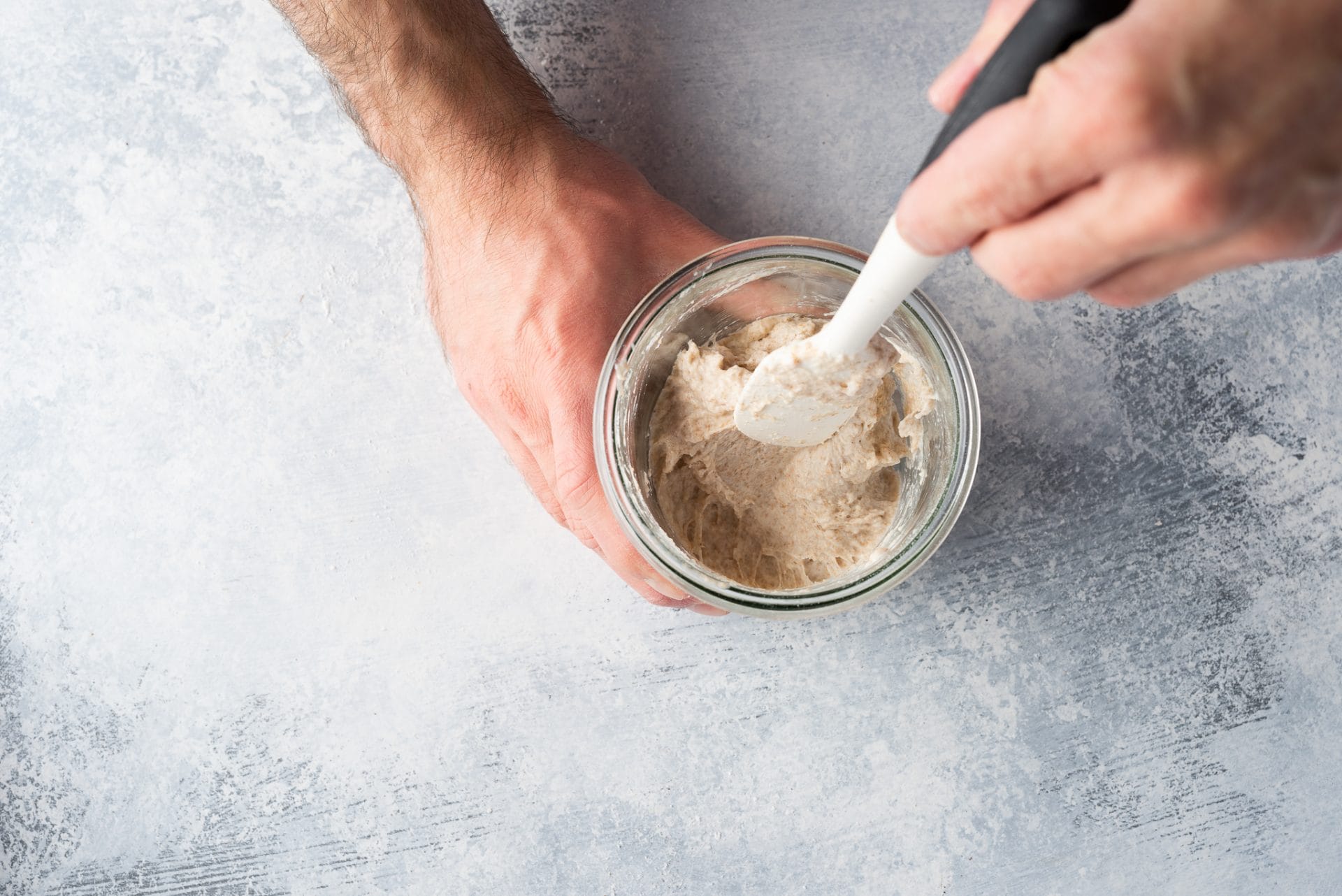
What is feeding sourdough starter?
A sourdough starter needs a regular feeding of fresh flour and water to provide it with "food" for its metabolic activities. The wild yeast and bacteria in a sourdough culture use the flour to continue to function, reproducing and eventually creating the byproducts of fermentation we're after when baking bread: for the dough to rise (through carbon dioxide production) and for the flavor to be created (organic acids and other compounds).
Now that we know what it is, let's look at how I feed my sourdough starter.
How do I feed my sourdough starter?
I use baker's percentages to communicate how I feed my starter in the same way I use them to convey bread formulas. All components of my sourdough starter are relative to the flour weight, which is always at 100%. This allows me to scale up or down my starter as needed—to, say, cover a large levain build for a big bake—while still maintaining the same ratio of ingredients.
Currently, I feed my sourdough starter the following ratio of carryover to flour to water:
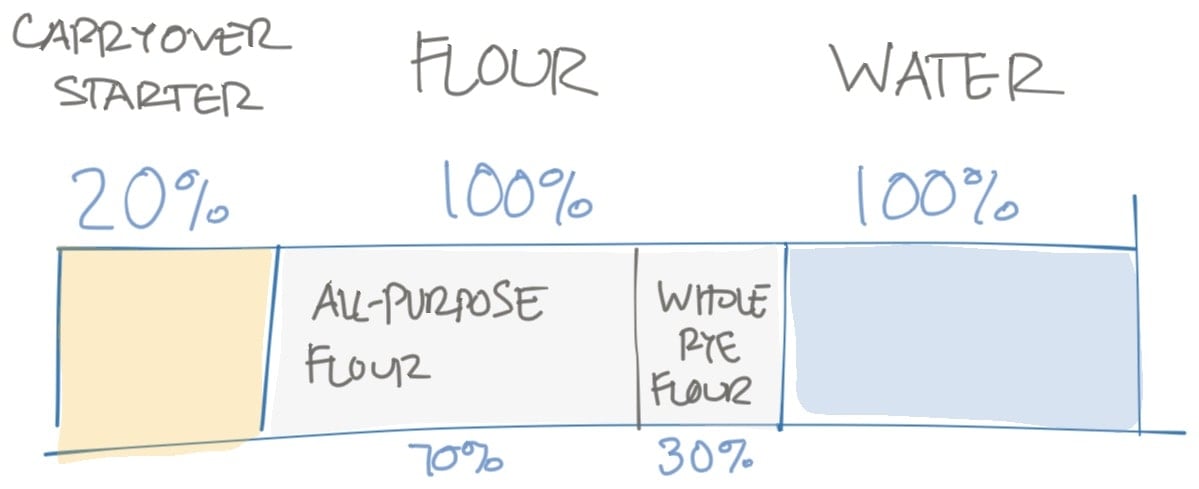
| Weight | Ingredient | Baker's Percentage |
|---|---|---|
| 20g | Ripe sourdough starter carryover | 20% |
| 100g | Flour (70g all-purpose flour, 30g whole rye flour) | 100% |
| 100g | Water | 100% |
I maintain around 220g of starter each day, translating to 20g carryover ripe sourdough starter, 70g all-purpose flour, 30g whole rye flour, and 100g water. I keep my starter in a large 3/4 Liter Weck jar and the jar in my small dough proofer every day.
If kept around 76°F (24°C), this sourdough starter should ripen about every 12 hours.
To actually perform the feeding, I discard the ripe sourdough starter in the jar down to 20g, add 70g fresh all-purpose flour, 30g whole rye flour, and 100g water. Then, I give it a thorough mix until everything is homogenous. Finally, cover the jar with its glass lid (it's not sealed shut, it just prevents air from getting inside) and leave it for 12 hours.
Adjusting sourdough starter feedings through the seasons
Depending on the temperature in my kitchen, I might slightly adjust the amount of ripe sourdough starter I carry over during each feeding. For example, in the extreme heat of the summer, I might drop the amount of carryover starter all the way down to 5 grams to ensure my starter doesn't ripen too quickly.
More ripe sourdough carryover left in the jar means a faster ripening time. On the other hand, less left in the jar slows ripening.
Conversely, in the coldest parts of the winter, I might bump the amount of ripe sourdough starter carryover to 25 grams, even with my dough proofer holding my starter jar and warming to 76°F (24°C).
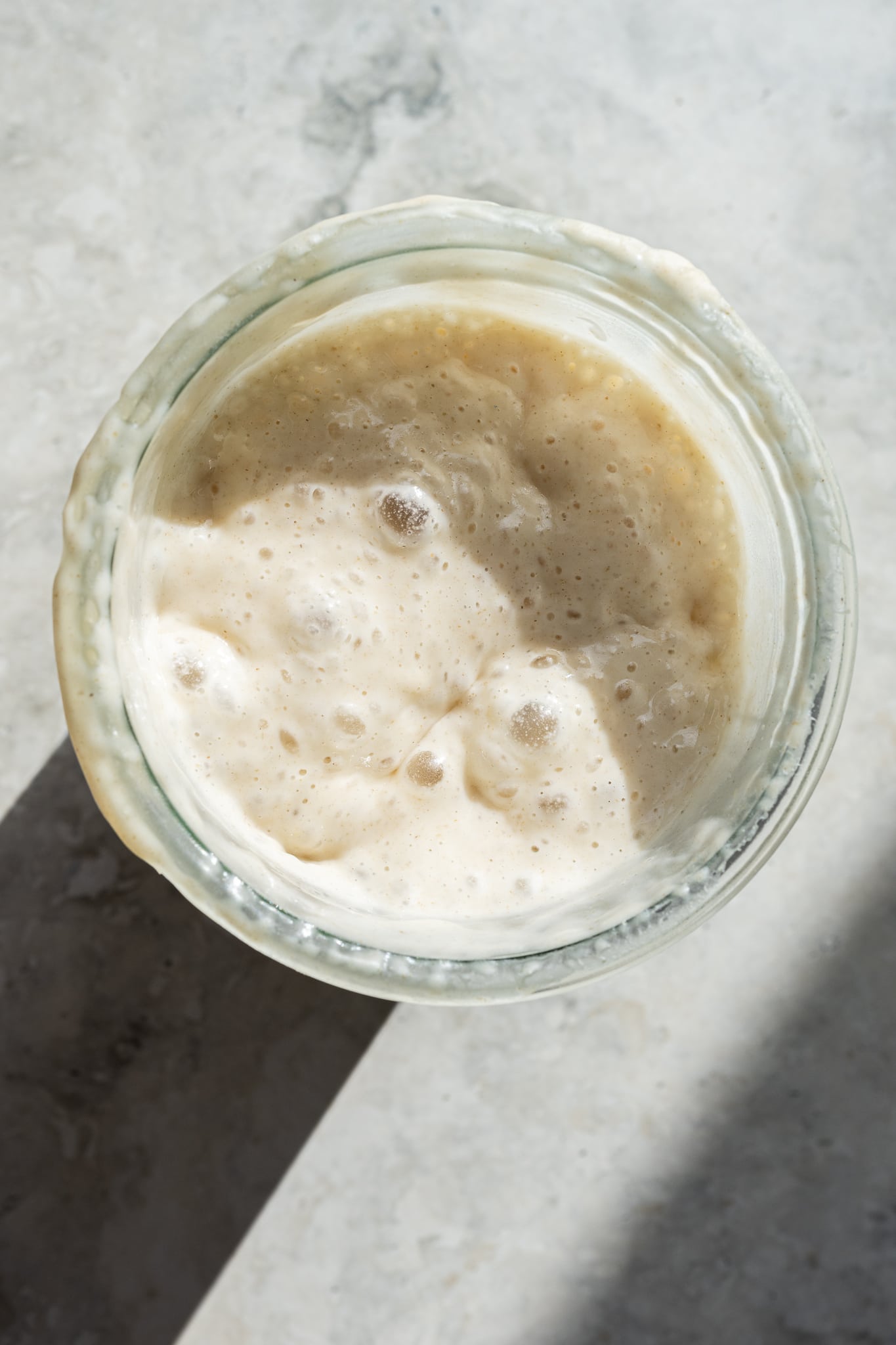
Sourdough starter feeding schedule
Now that you have an idea of what I feed my sourdough starter each day, let's look at its schedule.
With the above flour, water, and carryover ratios, I need to feed my sourdough starter twice a day if kept at a warm temperature. I like to feed once in the morning at around 9:00 a.m. and once at night at around 9:00 p.m. This isn't a super strict schedule, sometimes I feed a little earlier and sometimes a little later, but generally, I like to keep to those times.
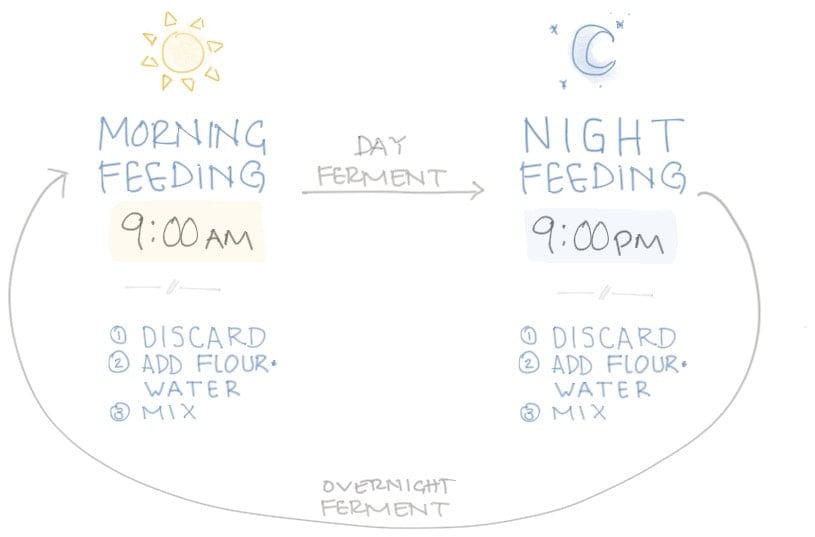
With this schedule, it means I can make the day's levain early at 9:00 a.m., and in the case of something like my Sunflower & Sesame sourdough, the levain will ripen and be ready for mixing around 2:00 p.m. In other cases, where I have an overnight levain, I'll make the overnight preferment at night around 9:00 p.m., and it's ready for mixing first thing in the morning.
The important thing is to always make a levain or mix a dough when your starter is ripe. This means making the levain with the ripe starter before feeding it.
In my case, I have two opportunities throughout the day to make a levain or mix a dough, at 9:00 a.m. and 9:00 p.m.
Recommended reading: Read on for more detail on my sourdough starter maintenance routine, including the signs I look for when my starter is ready for a feeding.
What's next?
How do I feed my sourdough starter? Well, that's it! I'll keep this post updated with any changes to my feeding regimen, but if you're interested in reading more about starters, look at my sourdough starter collection, where I have a collection of maintenance routines, discard recipes, guides, and more.
If you're having issues with your sourdough starter, check out my roundup of the most commonly asked starter questions I've compiled over the last decade: 21 common sourdough starter problems with solutions.
If you want to get baking straight away with your starter, check out these recipes to get a loaf of sourdough bread on your table in no time.
Sourdough starter frequently asked questions
I have an in-depth sourdough starter FAQ with many questions and answers, but below are a few related to the question how do I feed my sourdough starter?.
How long after feeding my starter can I use it?
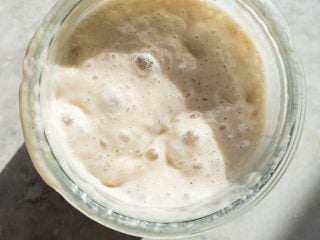
It depends on how you've fed it! If you feed it by carrying over a large percentage of ripe sourdough starter, it will be ready earlier. On the other hand, less carryover means it will take longer to ripen, assuming it's kept at the same temperature.
Why do you use rye flour in your sourdough starter?
I like using some whole grain rye flour to increase fermentation activity for a lively and strong starter. It's not mandatory, but a preference of mine: it results in a starter that has the performance and flavor characteristics I'm after. If you're making a levain when baking, this will likely have a larger impact on a single bake (both in terms of flavor and fermentation performance).
Do I have to feed my sourdough starter twice a day?
No. You can scale back to once a day or even scale up to three times a day, whatever works for you and your schedule. I like to feed it at least once a day to keep it strong and ready for baking. If you aren't baking for a while, you could store your starter.
Do I have to discard my sourdough starter?
It would be best if you discarded some portion of your starter each time you feed it unless you want to continue to let it grow. Eventually, you need to discard the used "food" (flour and water) that's been used to sustain your starter during the last fermentation period. This discard can be used to make sourdough waffles, pancakes, or many other things!
bentleyentracleas.blogspot.com
Source: https://www.theperfectloaf.com/how-do-i-feed-my-sourdough-starter/
Postar um comentário for "When Feeding Sourdough Starter is It Important to Use the Same Flour"